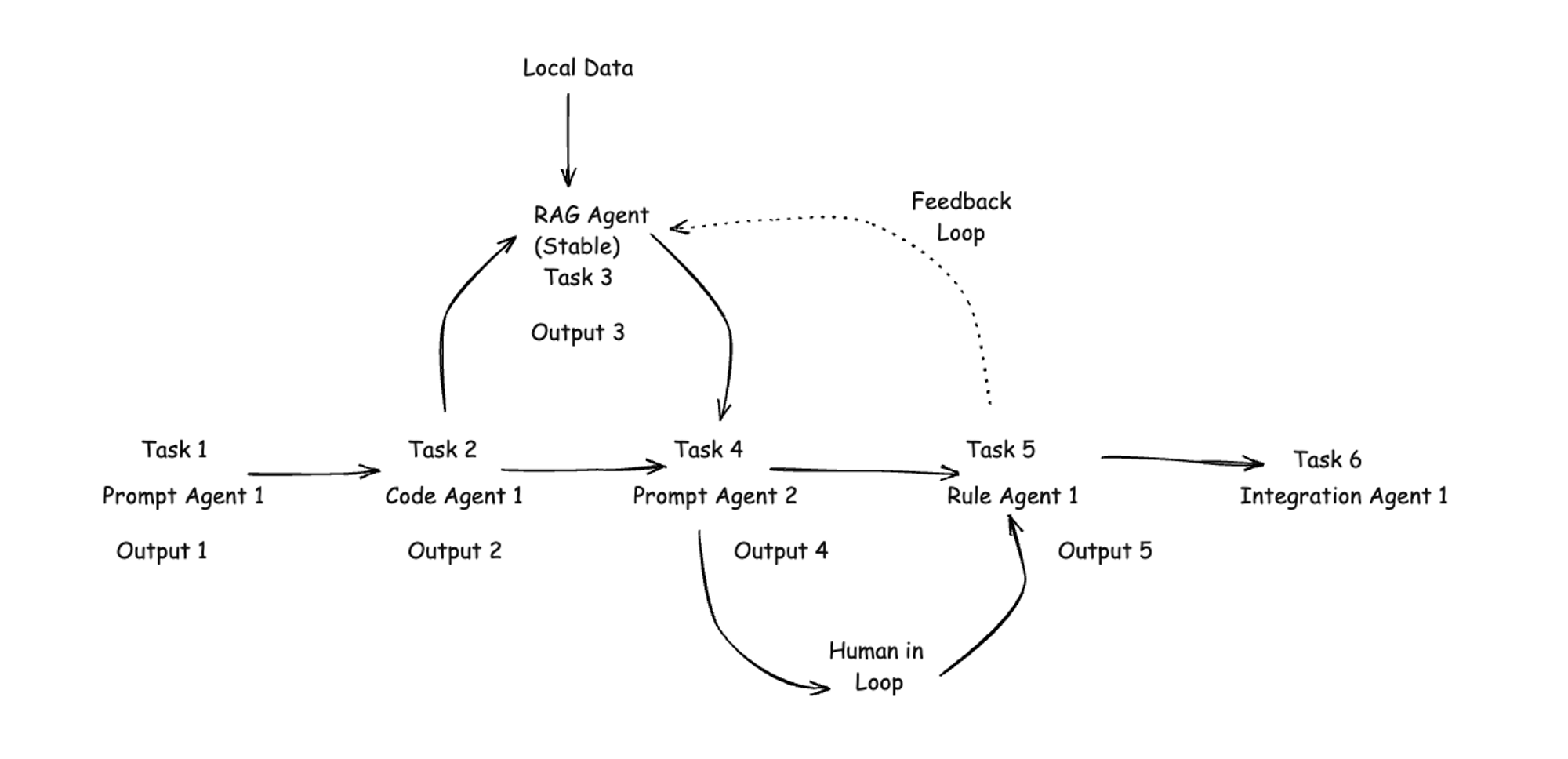| Agents | Agents have a persona and are designed to perform a task. | Prompt, Code, Integration, RAG, Chat, Data |
| Tasks | Tasks are detailed set of instructions that the agent takes up and completes. | Eg: Summarize a meeting transcript |
| Functions | Functions (or tools) are non-logic components designed to perform a repetitive or simple function. | Eg: Perplexity Search Tool |
| Nodes | Nodes are the states in the Automata pipeline. A node always has an Agent, a Task, and, if required, a function. | |
| Pipelines | A pipeline is a set of nodes strung together to execute a workflow. | |
| Models | Models are LLMs called by the Nodes with an agent that requires an LLM. | Prebuilt Models: OpenAI, Perplexity |

